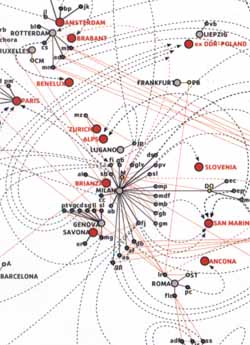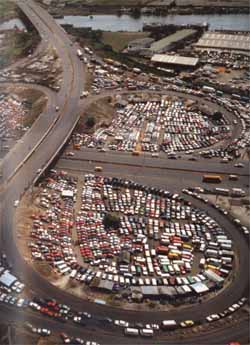Mutations

Huston, USA |

Organograma de pesquisa |
How to approach the extraordinary and without precedents mutations that occur in the contemporary metropolises? The most recent urban conditions on which a systematic body of research still does not exist. How to apprehend these new dynamic at the very moment they are happening?
There is a lack of observation and representation instruments of these territorial transformations, what demands developing new categories to interpret these unusual urban configurations. New modes to produce knowledge from situations of instability. An approach of these dynamic landscapes occupied by moving forces. A critic to the central fallacy of urbanism: the idea that the city expresses itself in its physical form, in objects. The city is before a field of forces in movement and continuous organization.
On one hand, the urban landscape today develops in accordance with the logic of the short-term efficiencies: agility, substitution, scale. Cities entirely delivered to the market. The movement of resources, the profit, became the central objective of urbanization. The mechanisms and spaces of shopping are colonizing and shaping all the aspects and institutions of the contemporary urban life, creating continuously articulated and undifferentiated interior spaces.
On the other hand, situations appear that guarantee their productivity in spite an almost complete absence of those infrastructures and organizations that define the urbanity according to conventional planning methodologies. They illustrate the large-scale efficacy of systems and agents considered marginal or informal. The relation between territorial mutation and auto-organization, in a panorama where innovation and change derive from planned or not regulated processes. Cities at the forefront of globalizing modernity.

Pearl River Delta, China |

Lagos, Nigeria |
R. Koolhaas, S. Boeri, S. Kwinter, H.U. Obrist, Mutations, Actar / Arc en Rêve, Bordeaux, 2000.